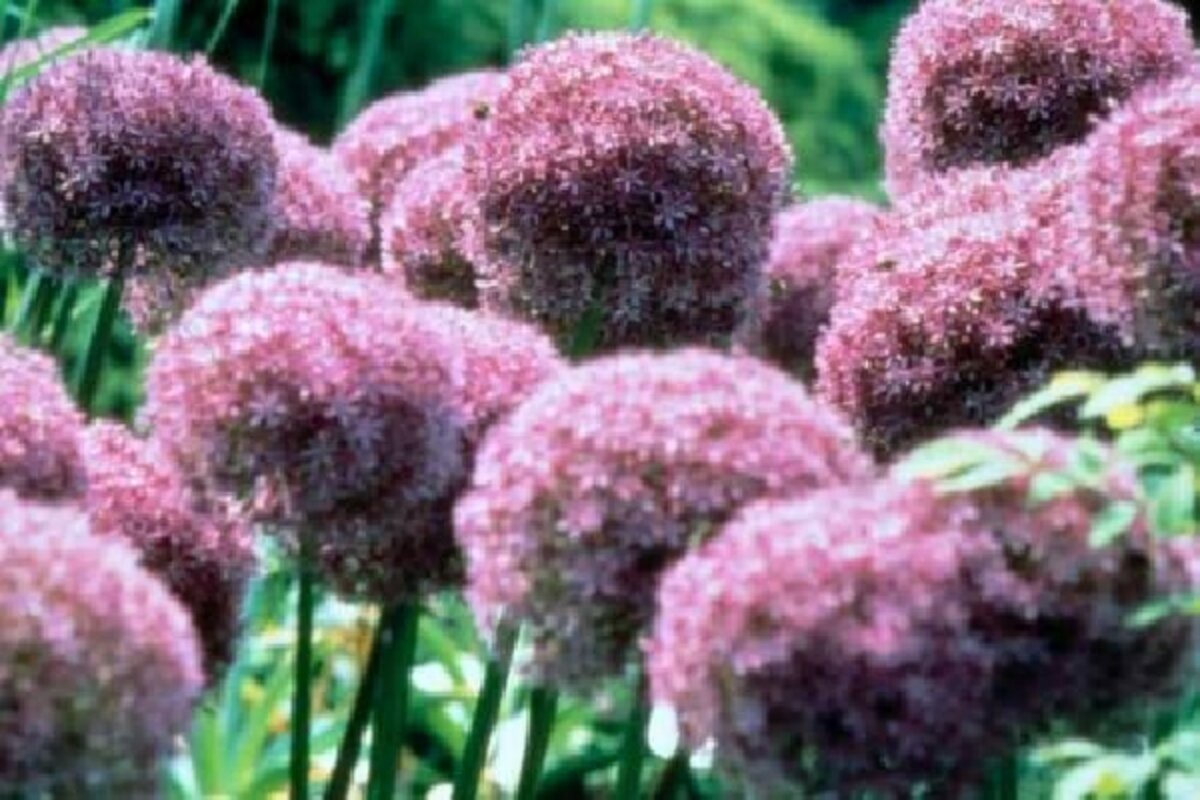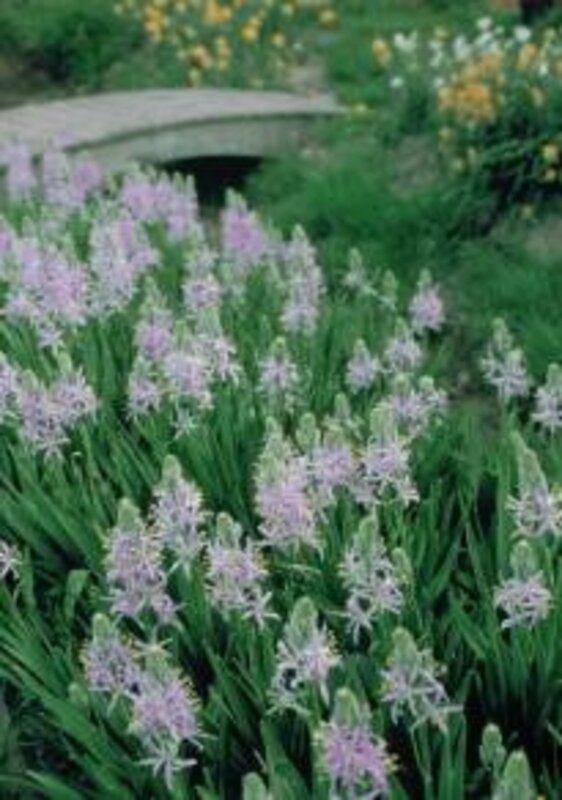How to naturalize spring-flowering bulbs
Loading...
Gardeners know that fall is prime time for planting. The cooler temperatures and frequent rains of autumn make conditions perfect for establishing the flower bulbs, perennials, trees, shrubs, and lawns that add to a home’s appeal.
Of these, only spring-blooming bulbs absolutely must be planted in fall. This “now or never” push makes fall bulb planting an annual tradition in many households, where spending an hour or two each fall can reap colorful spring time benefits for years.
Not surprisingly, it’s many bulbs’ ability to naturalize and come back to bloom year after year that attracts people.
This come-back benefit makes bulbs a smart investment, both financially and emotionally. When naturalized spring bulb flowers come up and bloom each spring, you begin to think of them as more than seasonal markers. You wait for them. They come back as "friends."
Spring-blooming bulb flowers – including daffodils, species tulips, grape hyacinths, crocus, scilla, and more – can be planted to naturalize in beds, ground covers, even the lawn where you can tuck the bulbs right under the grass.The secret to planting naturalized bulbs is that you don’t have to do it all at once. Pace yourself. Each year treat yourself to something new or something more.
What does naturalizing mean?
Many spring-blooming bulbs will thrive in a wide variety of garden conditions. Some, including many tulip varieties and hyacinths, are best treated as annuals. Others will “perennialize” or do well for three to four years before diminishing.
Others will make themselves right at home and “naturalize” into the landscape. Technically, naturalizing bulbs are those that accommodate themselves fully to their new sites, feeling so at home that they multiply naturally, on their own, increasing in numbers year after year.
Why will some bulbs naturalize and others won't? Actually, most bulbs are, by definition, perennials. But, in reality, not all bulbs will adapt to diverse growing conditions so readily.
A lot depends on the particular type of bulb and the particular planting site. Soil, climate, water, and other conditions all play a part in determining which types of bulbs will be the best repeat performers in any given environment.
A further critical factor is that, to naturalize, the bulb plant must be left undisturbed after bloom, with leaves left intact for six weeks or more to die back naturally. It's during this post-bloom period that the green leaves take on the task of recharging the bulb with stored food starches for next year’s bloom via the process of photosynthesis.
Look for bulbs marked “good for naturalizing” or “good for perennializing” on packaging, in mail-order website listings, or at (see Spring Bulbs).
What about squirrels, deer and other pests? Good old Mother Nature is a step ahead of you here, having programmed flower bulbs as mini-subterranean survival units.
Many (though not all) of the bulbs that naturalize best are also among the most pest-resistant! If animal pests are a problem in your area, check out the lists of pest-resistant bulbs on (Spring Bulbs, pest prevention tips).
Plant in soil that drains well. Soggy soil rots bulbs. Avoid planting where water collects such as the base of hills, near downspouts, or in landscape depressions.
In garden beds, work organic matter such as compost, well-aged cow manure, or peat into the soil, mixing it in deep enough to provide drainage at root level.
Consider the sunlight. Most bulb plants prefer full sun. But don’t let fall planting conditions fool you. What’s dark and shady in fall may be bright and sunny next spring before the trees’ new leaves come out.
For early and mid-season spring bloomers, most deciduous trees will not yet have leafed out. For late-season bloomers, shade may be an issue.
Which sites are best? When naturalizing, think long term. You want to choose sites where your colorful spring bulb flowers can become a part of the landscape, multiplying and spreading over time.
Flower beds are great, of course. So are sunny or partly sunny lawns, ground cover beds, forest edges, roadside edges. These are all places where flamboyant spring bloomers thrive.
Even shady woodlands areas can be enlivened with permanent naturalized bulb plantings of shade-loving species such as Allium ursinum (ransom), Anemone nemorosa (wood anemone), Corydalis, Arum italicum, Fritillaria meleagris (snakeshead fritillaria), Galanthus nivalis (snowdrop), Hyacinthoides non-scripta (bluebell), and Ornithogalum umbellatum (star of Bethlehem).
Planting is easy: Dig hole, pop in bulbs, cover up. Plant small bulbs five inches deep; plant large bulbs eight inches deep, or come as close as you can.
By digging a trench, you can position multiple bulbs at once. When digging individual holes, it’s OK to use one good-sized hole to plant a large bulb or two with several smaller understory bulbs (for instance a daffodil bulb with several grape hyacinths).
When planting in grassy areas or on slopes, use a spade to flip back a patch of grass, like sod, to create a pocket underneath. Place bulbs inside the pocket, then reposition the grass to cover them up. Now tamp down.
On slopes, try to position your bulbs to achieve naturalistic swaths of color following the flow or topography of the land.
Plant with the pointy end up. Bulbs have a top and bottom. The pointy end is generally the top. The bottom, or basal plate, is generally a flatter, darker area from which the roots will grow.
On some bulbs, especially the little ones, it’s not always easy to tell which end is which. Not to worry, bulbs will usually right themselves underground as the roots begin to grow.
After planting, water the planting area to settle the ground and initiate rooting. Or let autumn rains do your watering for you.
Naturalized bulbs appreciate food. The bulbs you buy in fall come fully charged, chock full of the stored food they need to flower the next spring. Bulbs that are planted for only one season of enjoyment don’t need fertilizer. Naturalized bulbs are another story – they’re in for the long haul. A bit of food now and then gives naturalized bulbs a welcome boost.
For the first season
– If soil is poor, it’s always a bonus to work a good organic compost or well-rotted cow manure into the soil when planting and also “top-dress” or mulch with this material.
– Or, add compost or peat to the soil for drainage and top-dress with a 9-9-6 slow release or an 8-8-8 or 10-10-10 fast-release soluble fertilizer (about one tablespoon per square foot).
What you do next spring depends on what you did in the fall
– If you used a slowrelease method, such as the compost, cow manure, or the slow-release fertilizer, don’t do anything.
– If you used a fast-release fertilizer, apply a nitrogen-rich fast-release fertilizer in the spring just as the shoots first emerge from the soil (which would be about six weeks prior to bloom).
– Each fall, fertilize again by your method of choice, for optimal results.
After spring-flowering bulbs have faded. “Dead head” the plants by snipping off the faded flowers. This prevents the formation of seeds, but allows the green foliage to die back naturally, a process that generally takes about six weeks after bloom.
A dead-heading exception: Daffodils do not require dead-heading — although many people choose to do so for aesthetic reasons. Large naturalized beds of daffodils can be left "au naturale" after blooming and suffer no ill effects.
Avoid the urge to "tidy up" bulb plantings after bloom by tying up the leaves with string or rubber bands, as some suggest. The six-week leaf die-back time is a critical work period for leaves busy with photosynthesis (the process by which leaves combine chlorophyll and sunshine into the starches that recharge the bulb with food for next year’s bloom). The leaves must be free to soak up sunshine during this crucial period.
If fading foliage is unattractive, the best solution is camouflage. Interplant bulbs with hostas, coral bells (heuchera), astilbe, lady’s mantle, daylilies, or other perennials that leaf out early in the spring season. They will grow up and around fading bulb plants and disguise the dying foliage of the bulbs.
Naturalizing and other flower bulb planting techniques are the subject of simple, easy to follow how-to videos on . Many of these videos are also available on it the .
Editor’s note: For more on gardening, see the Monitor’s main gardening page, which offers articles on many gardening topics. Also, check out our and our . You may want to visit . Take part in and get answers to your gardening questions. If you join the group (it’s free), you can upload your garden photos and enter our contests.





